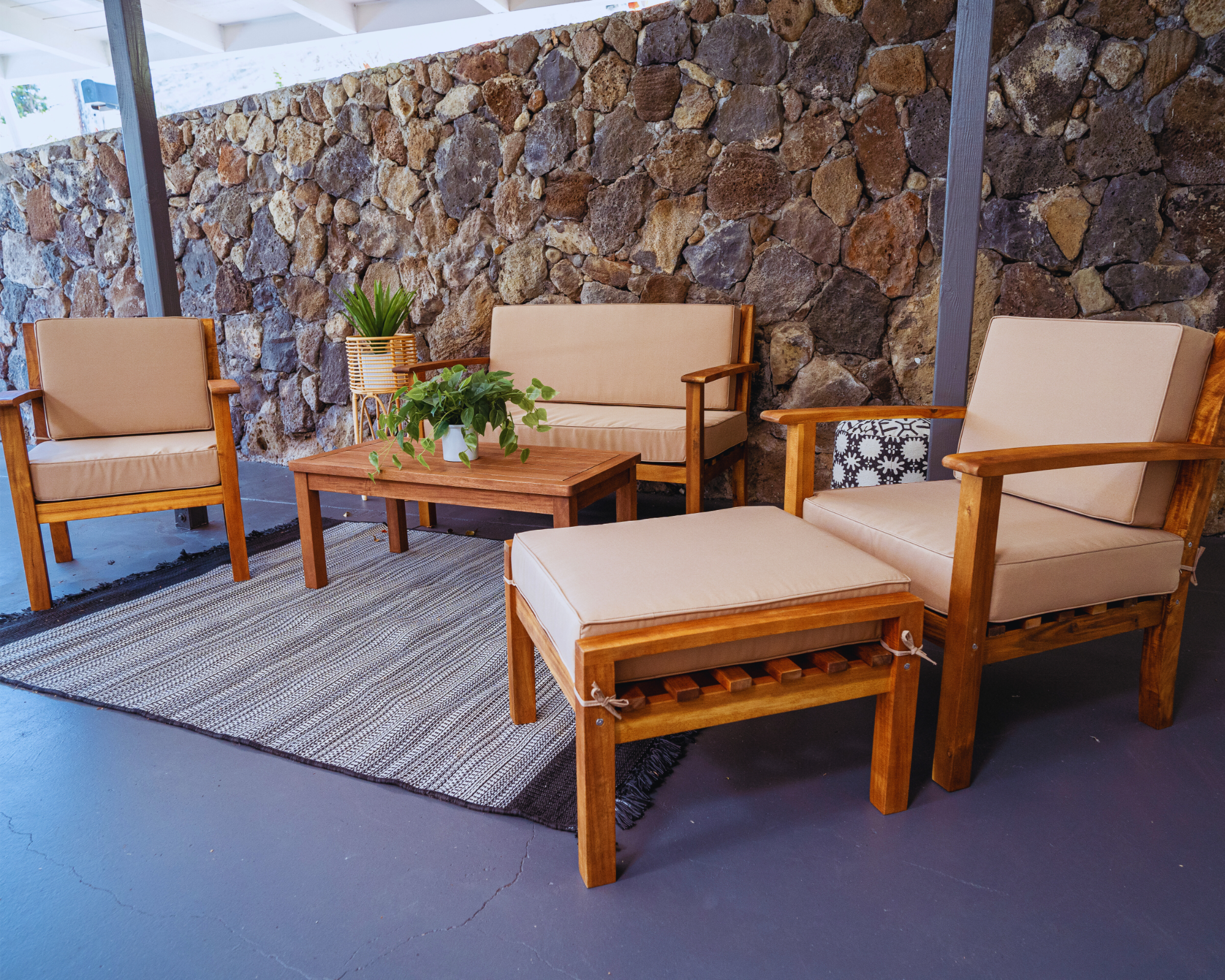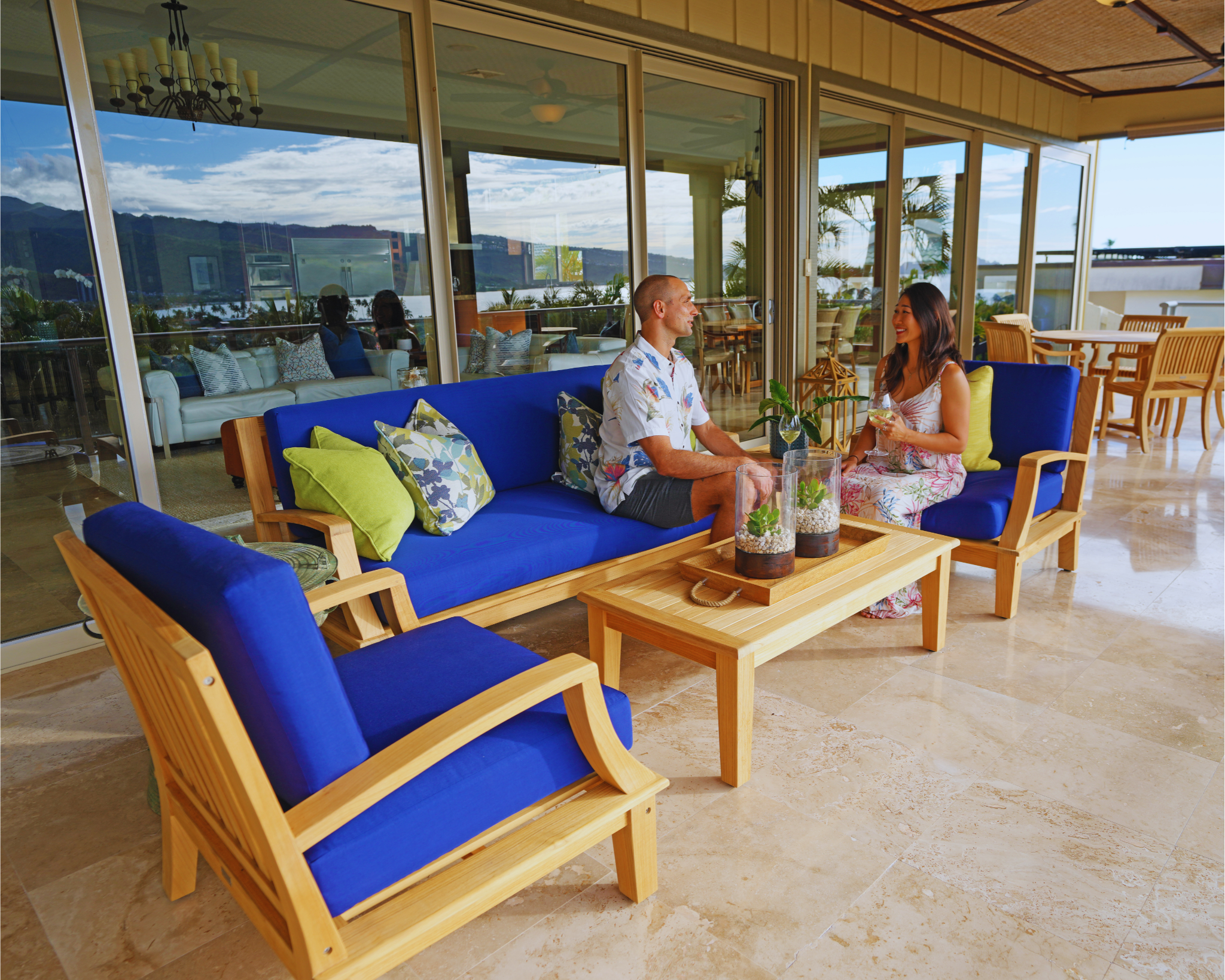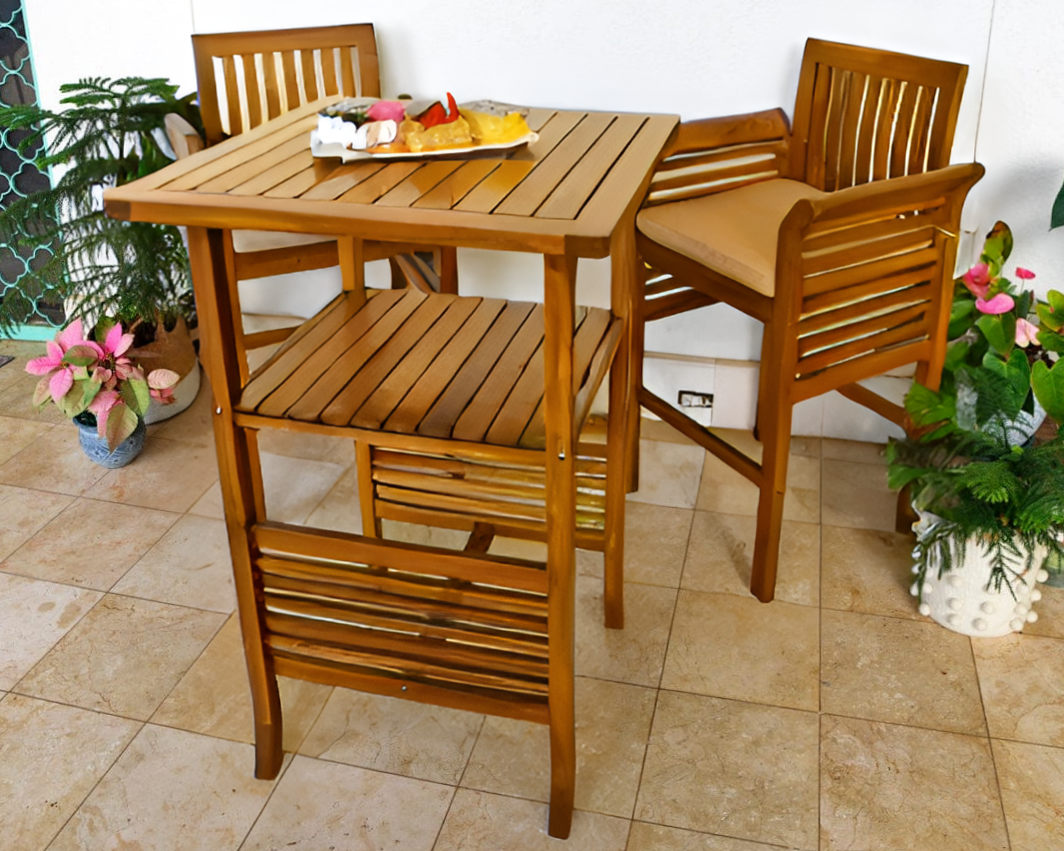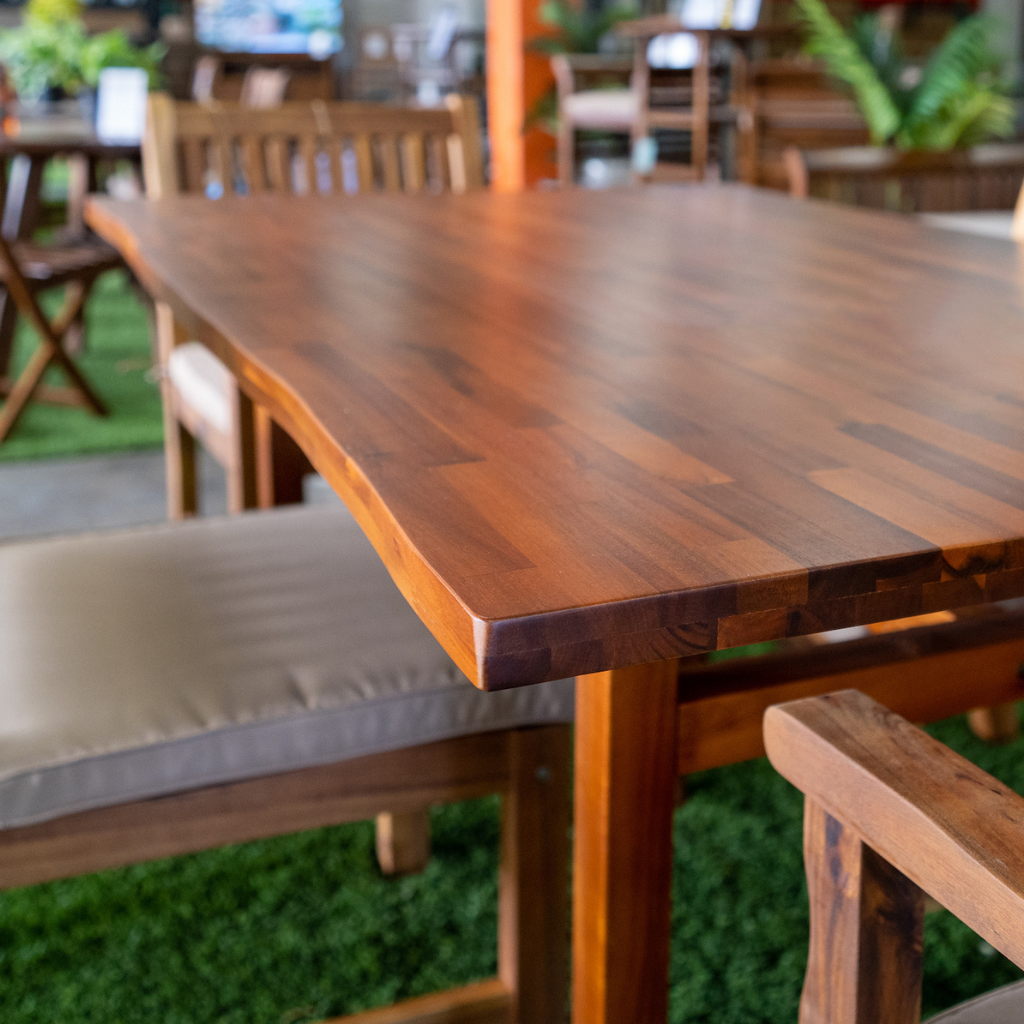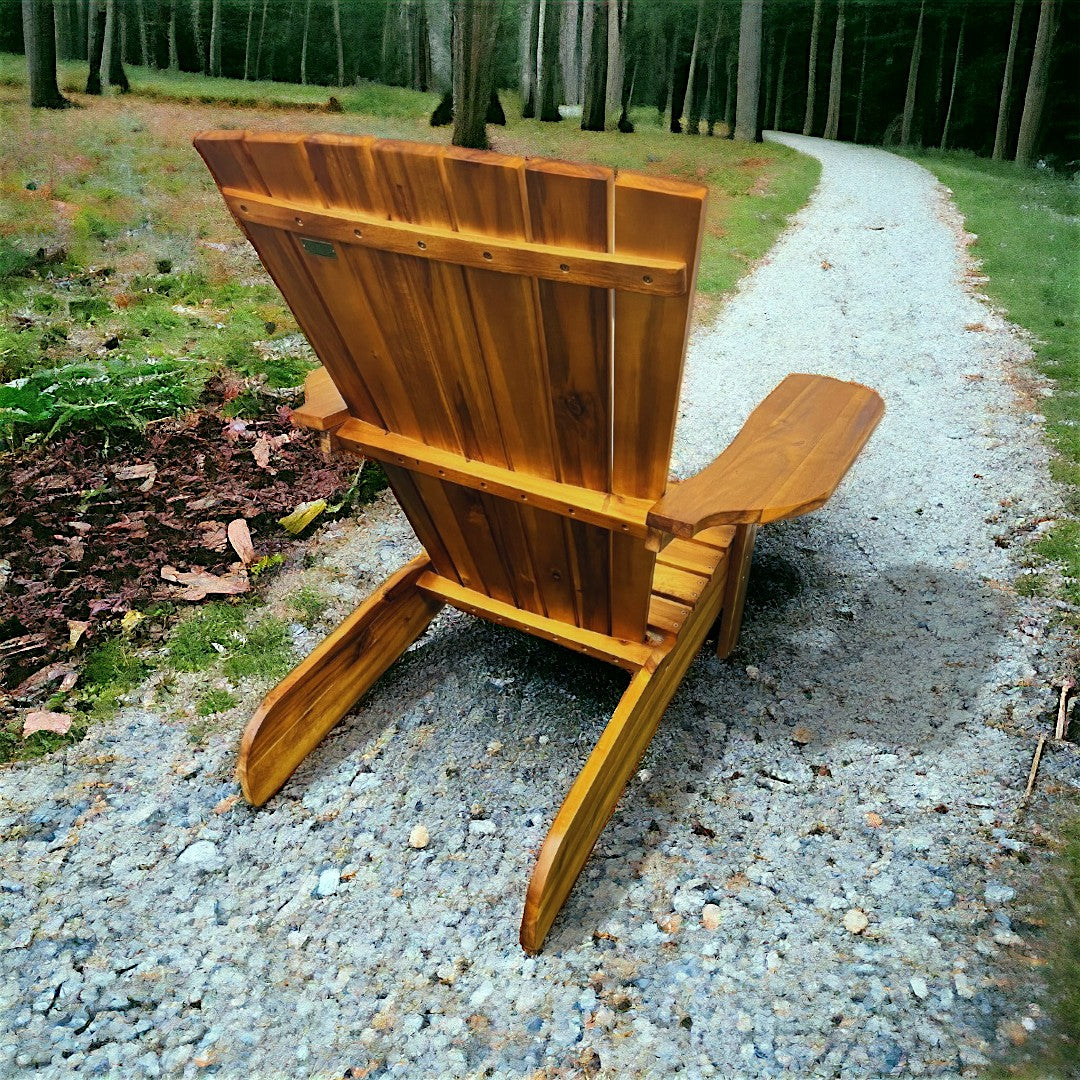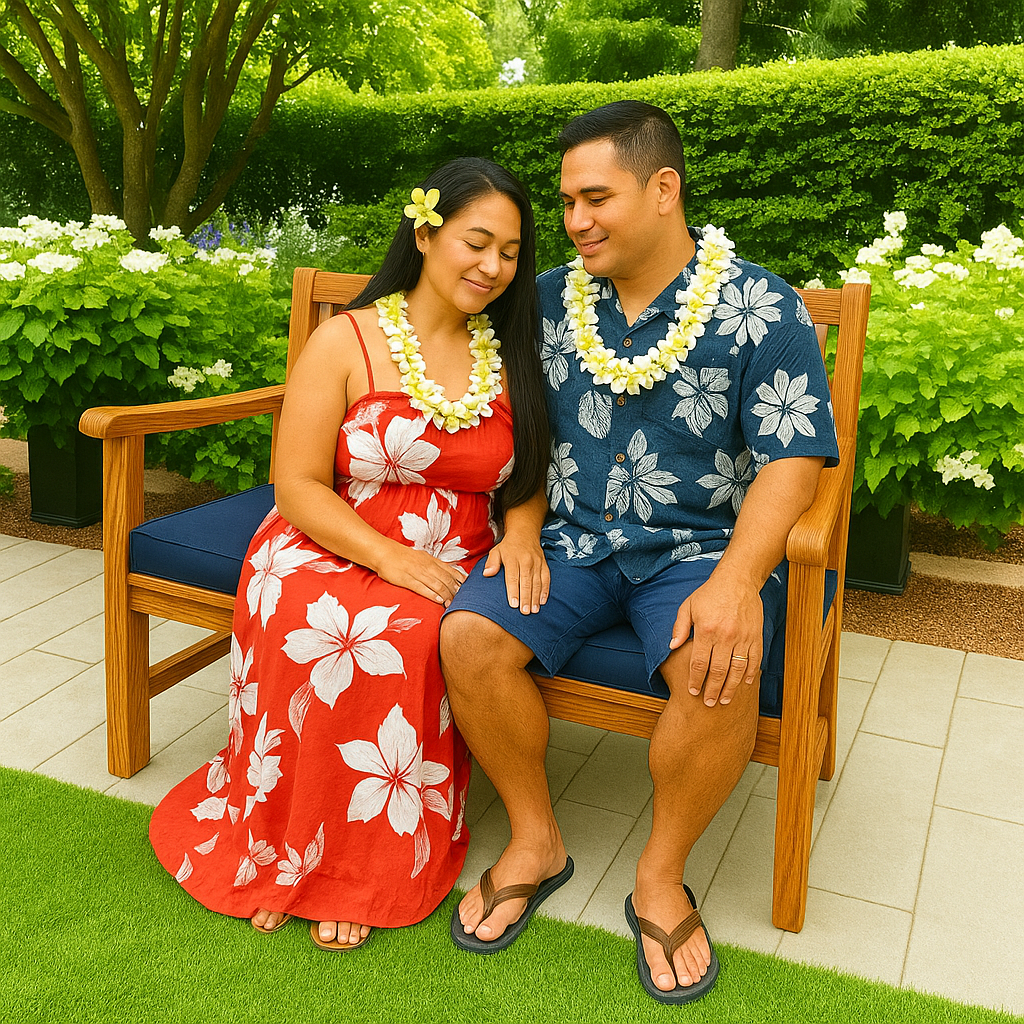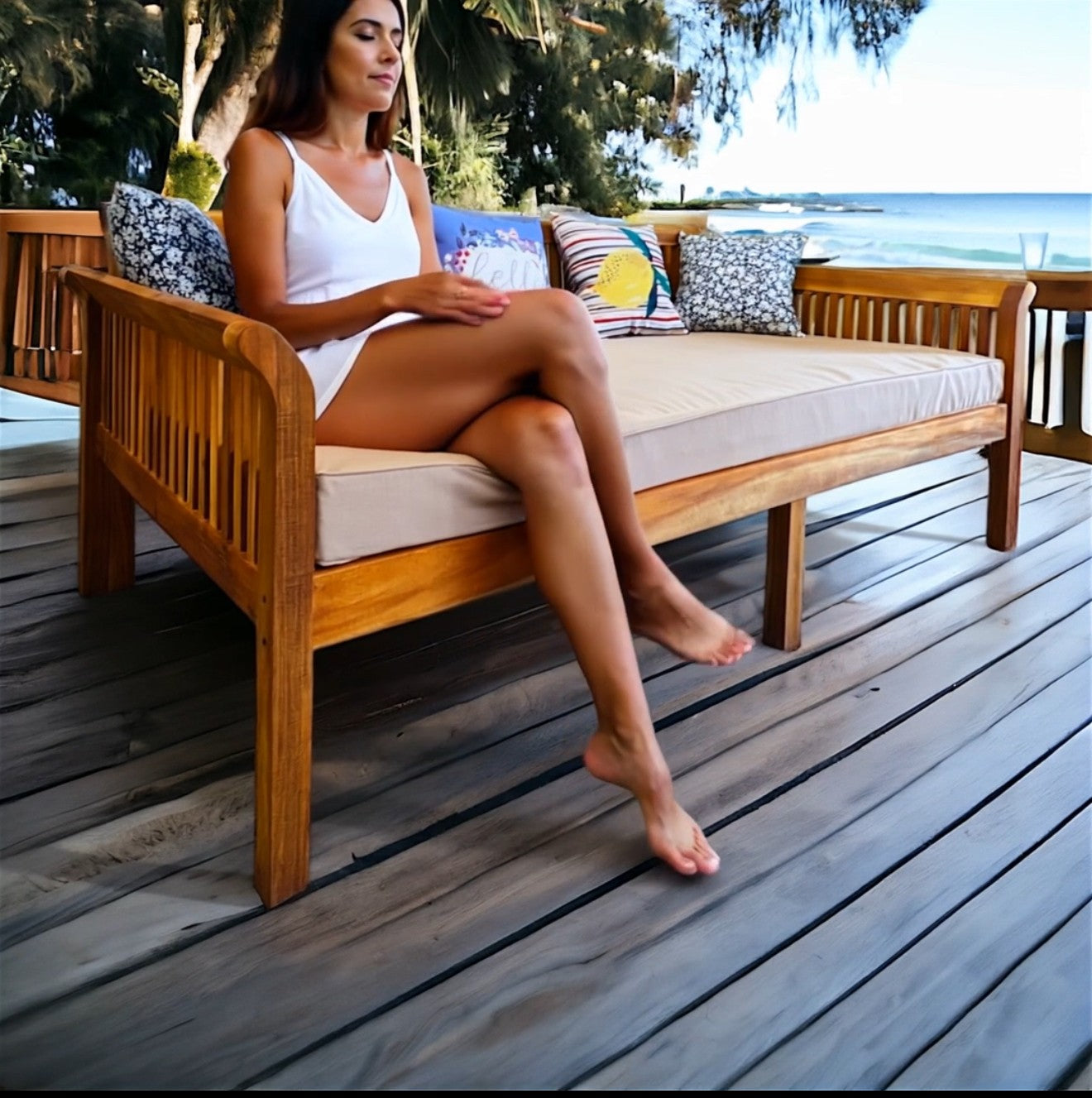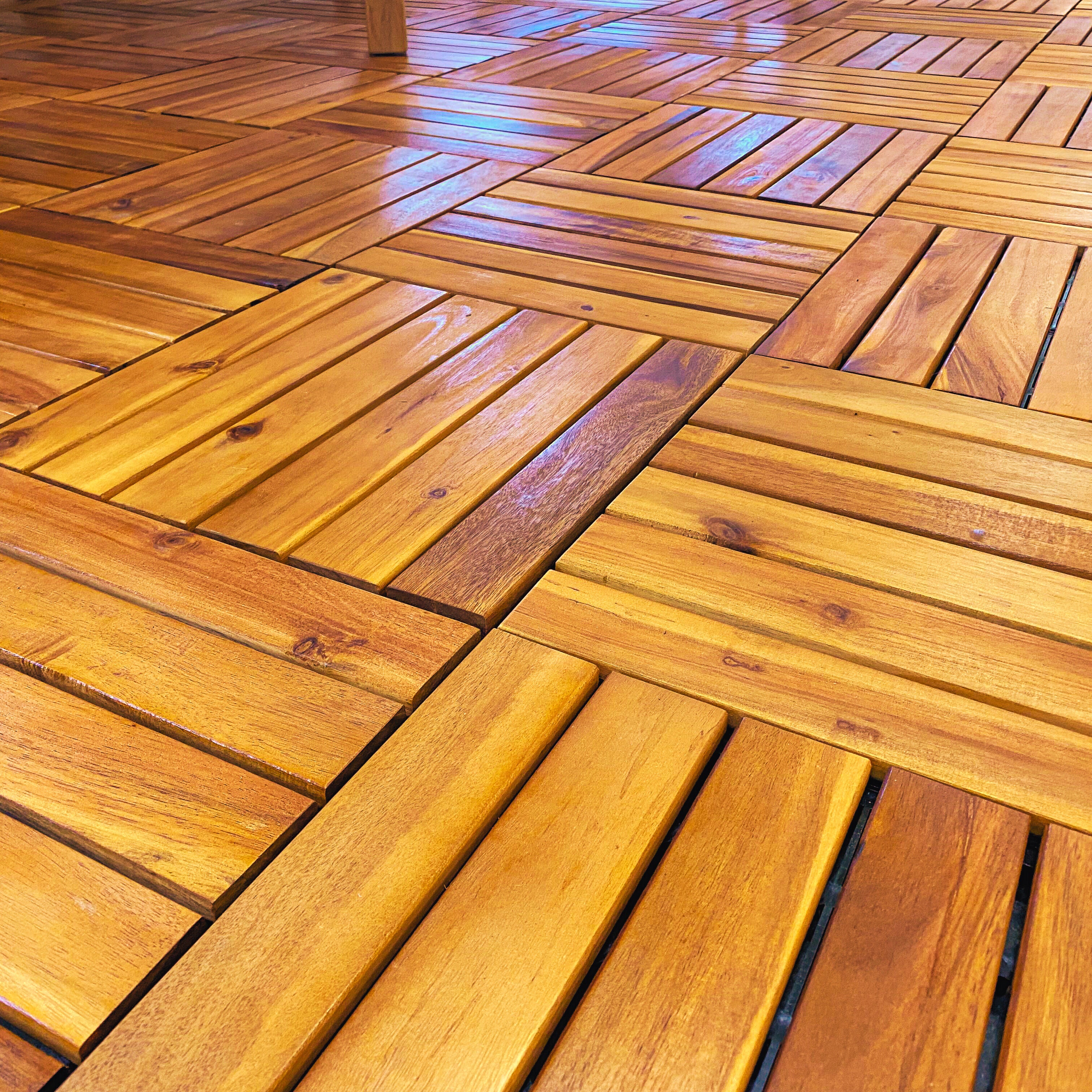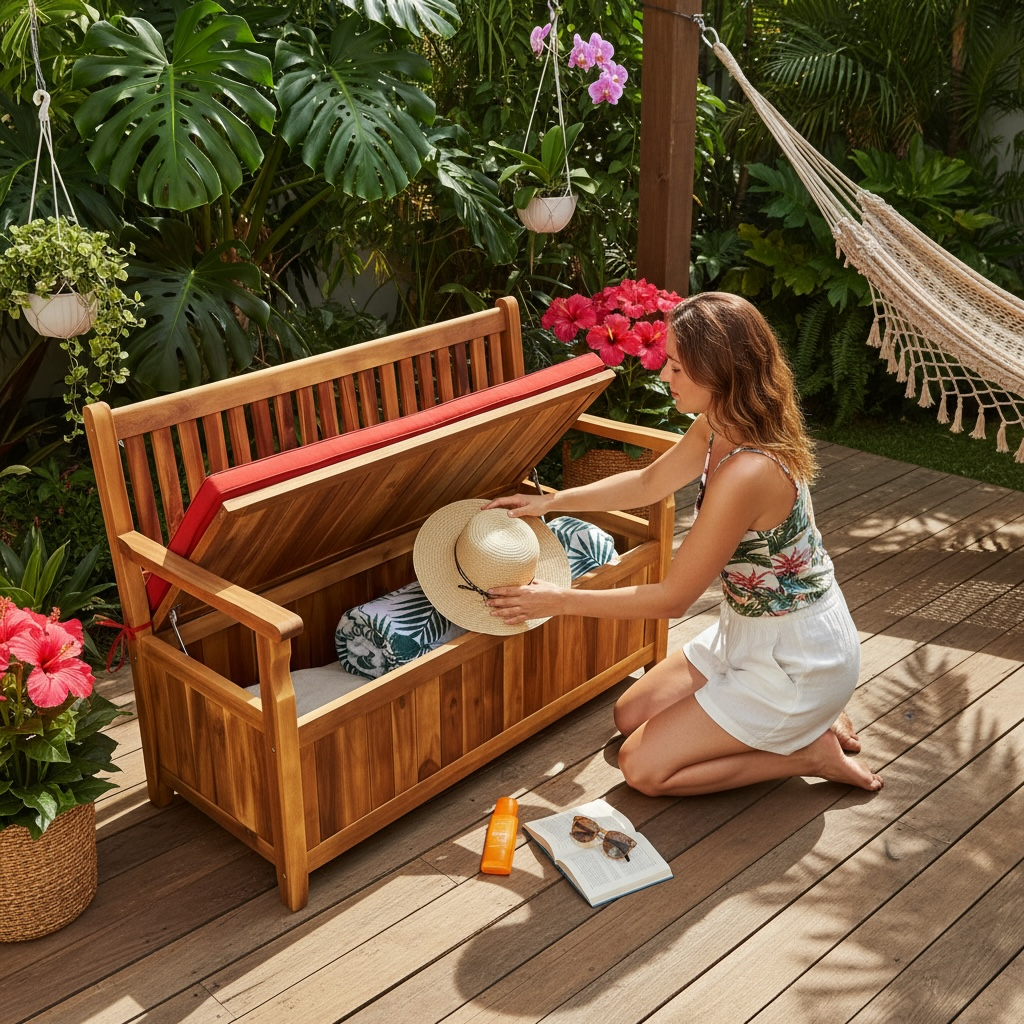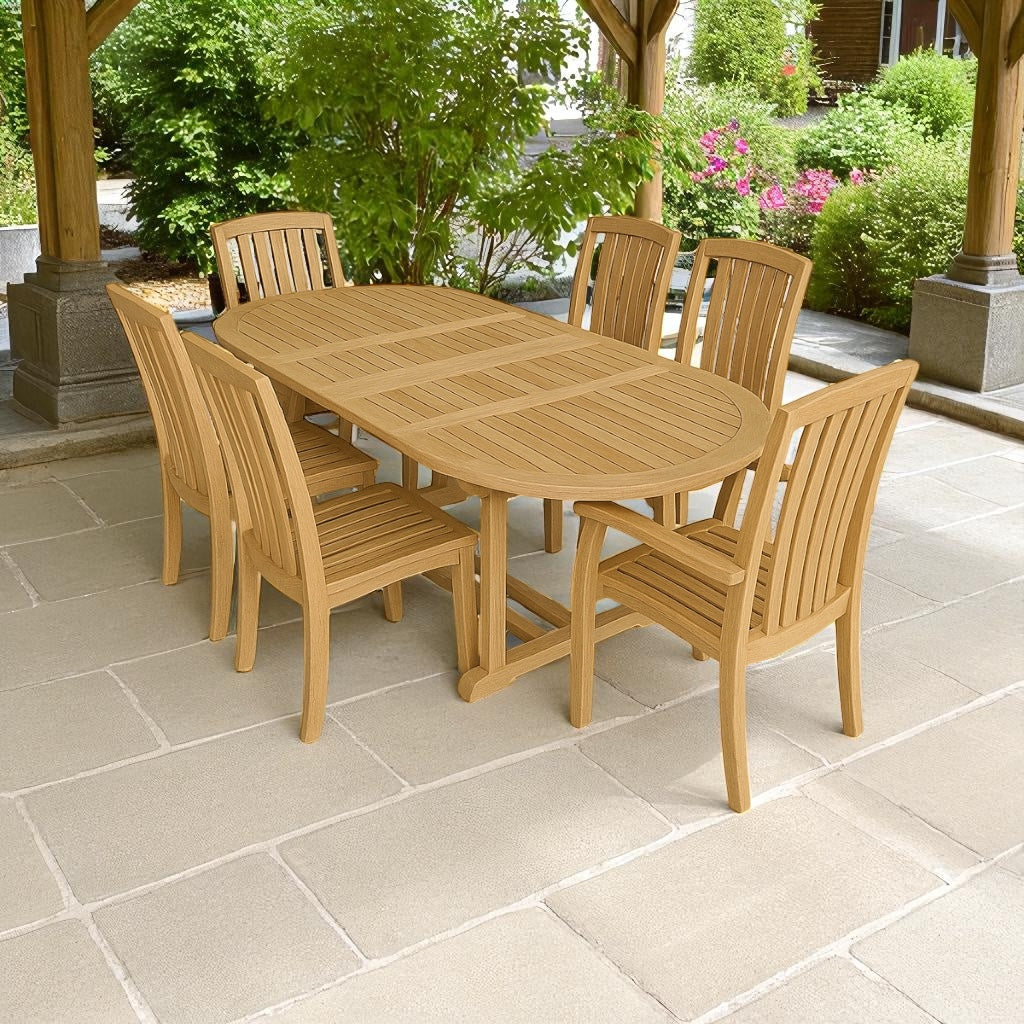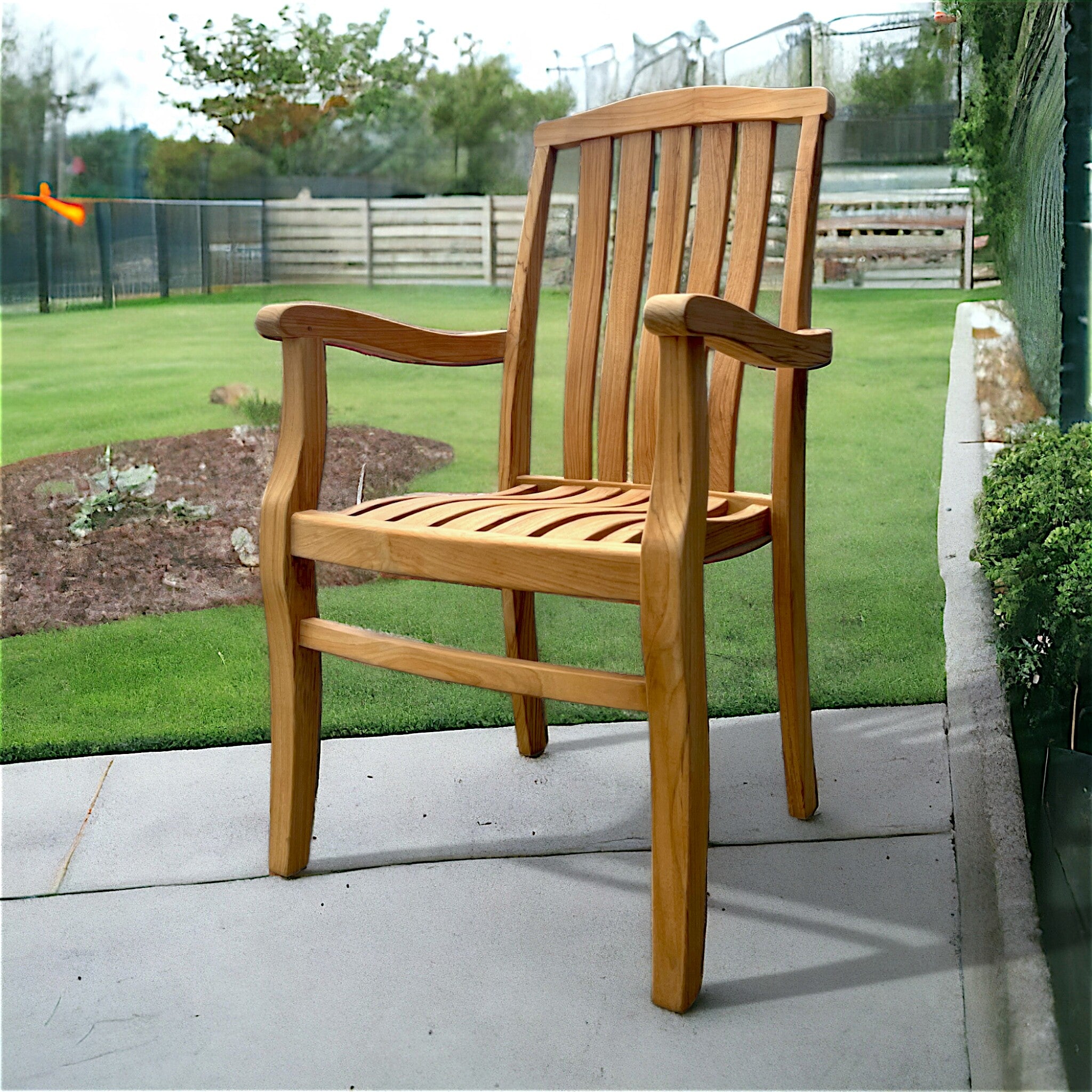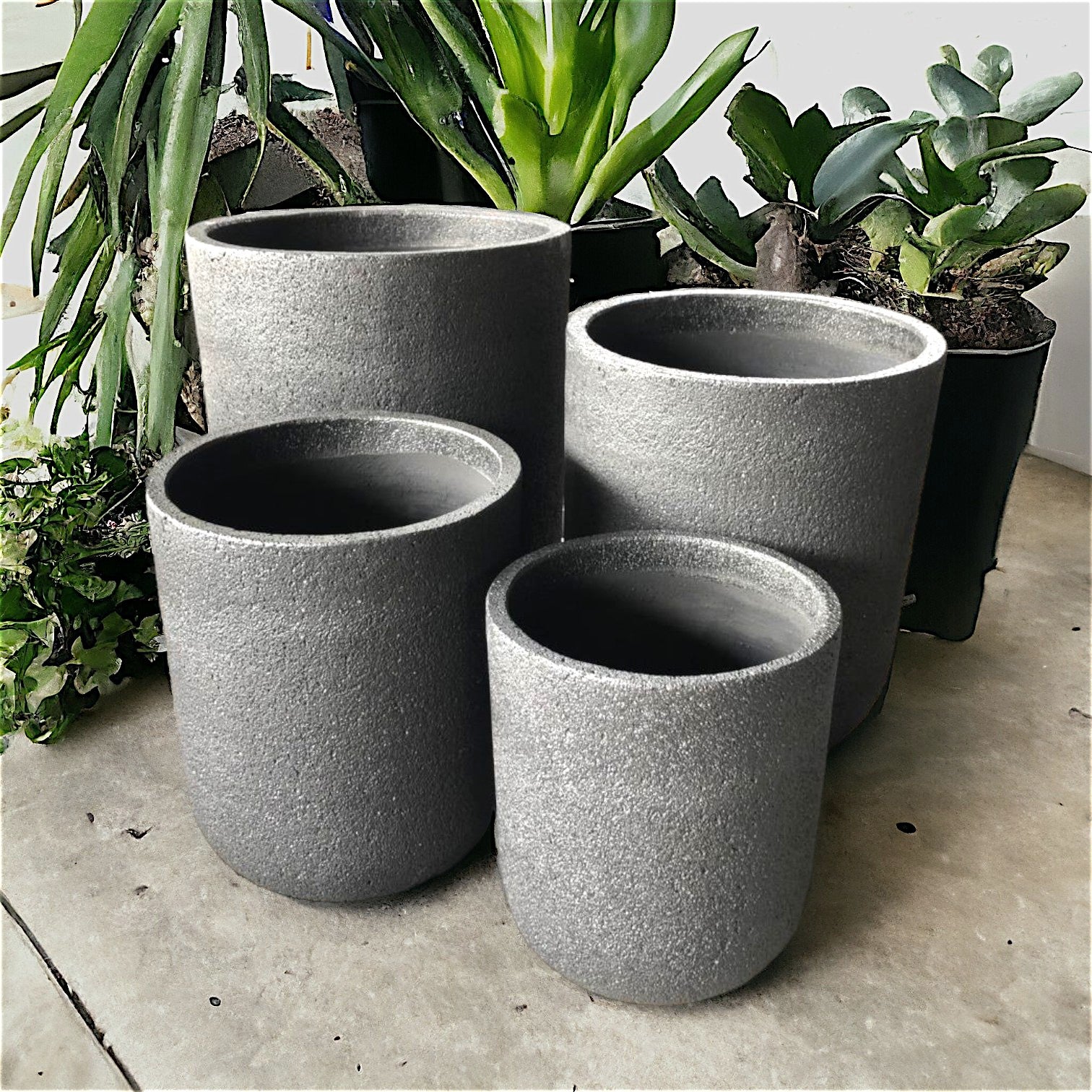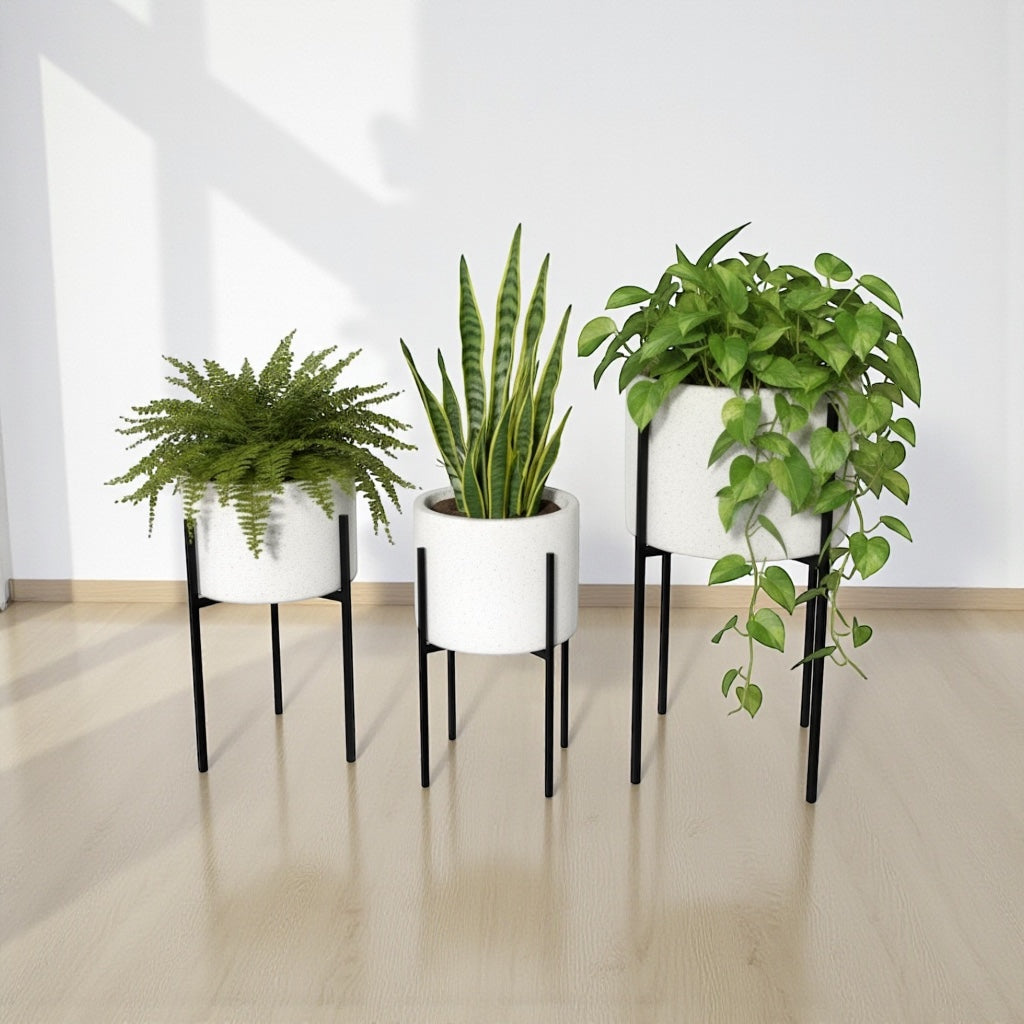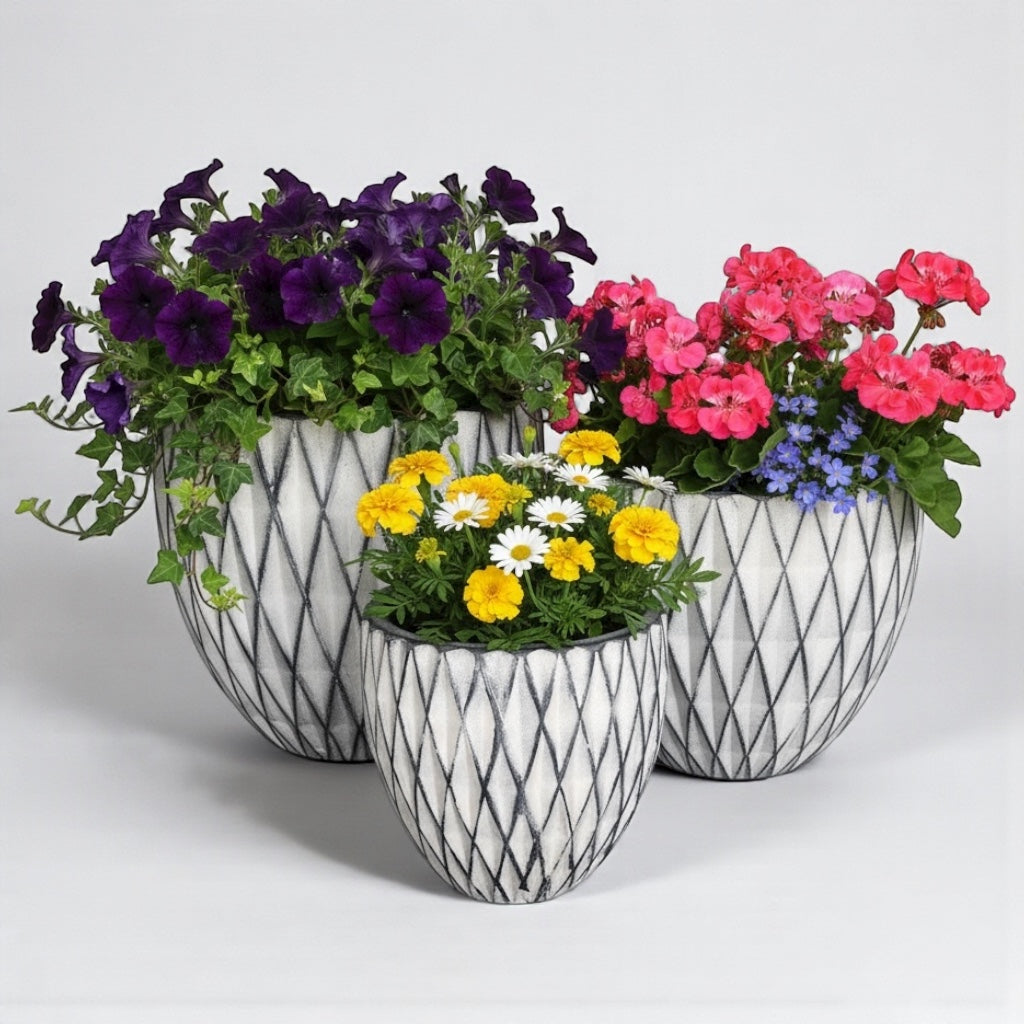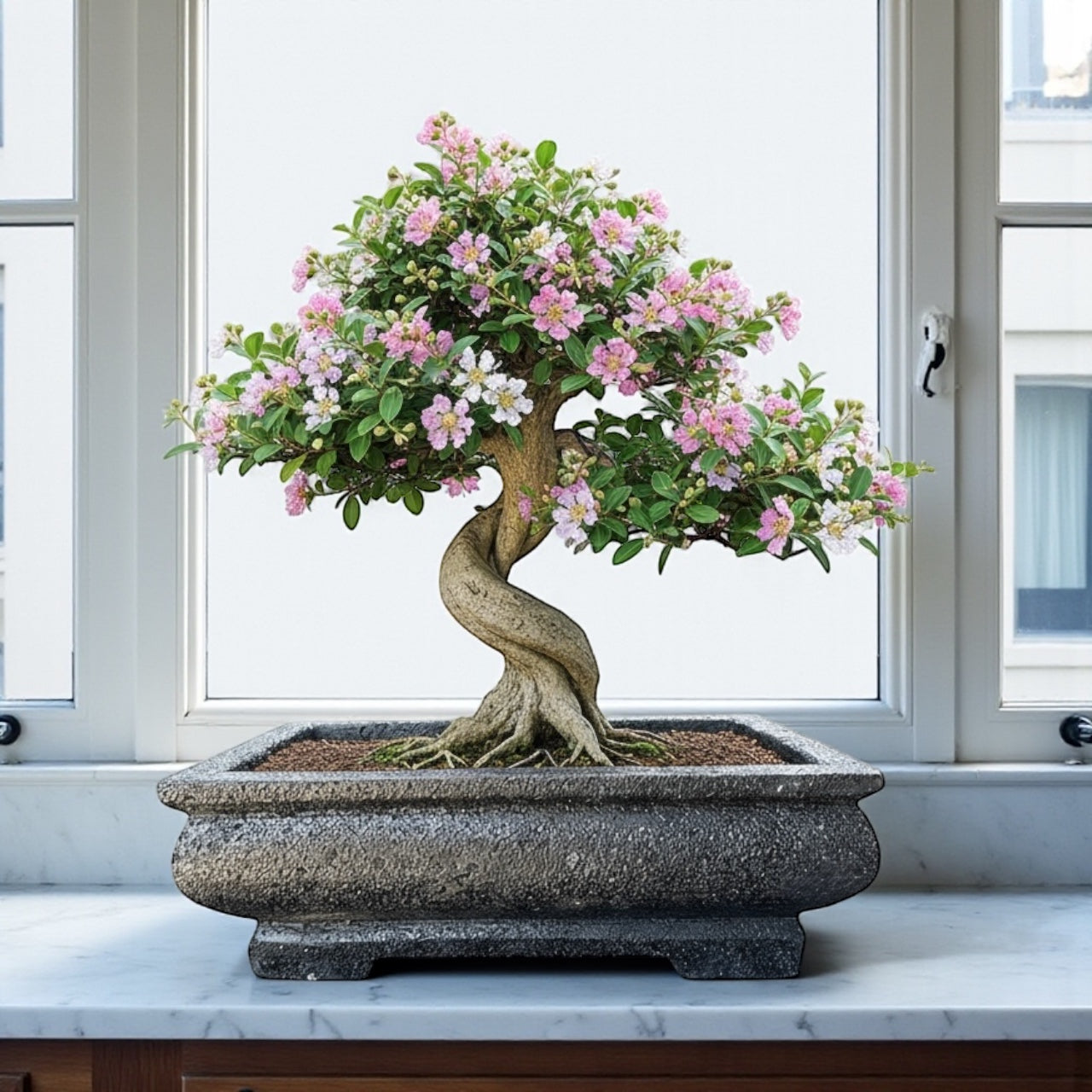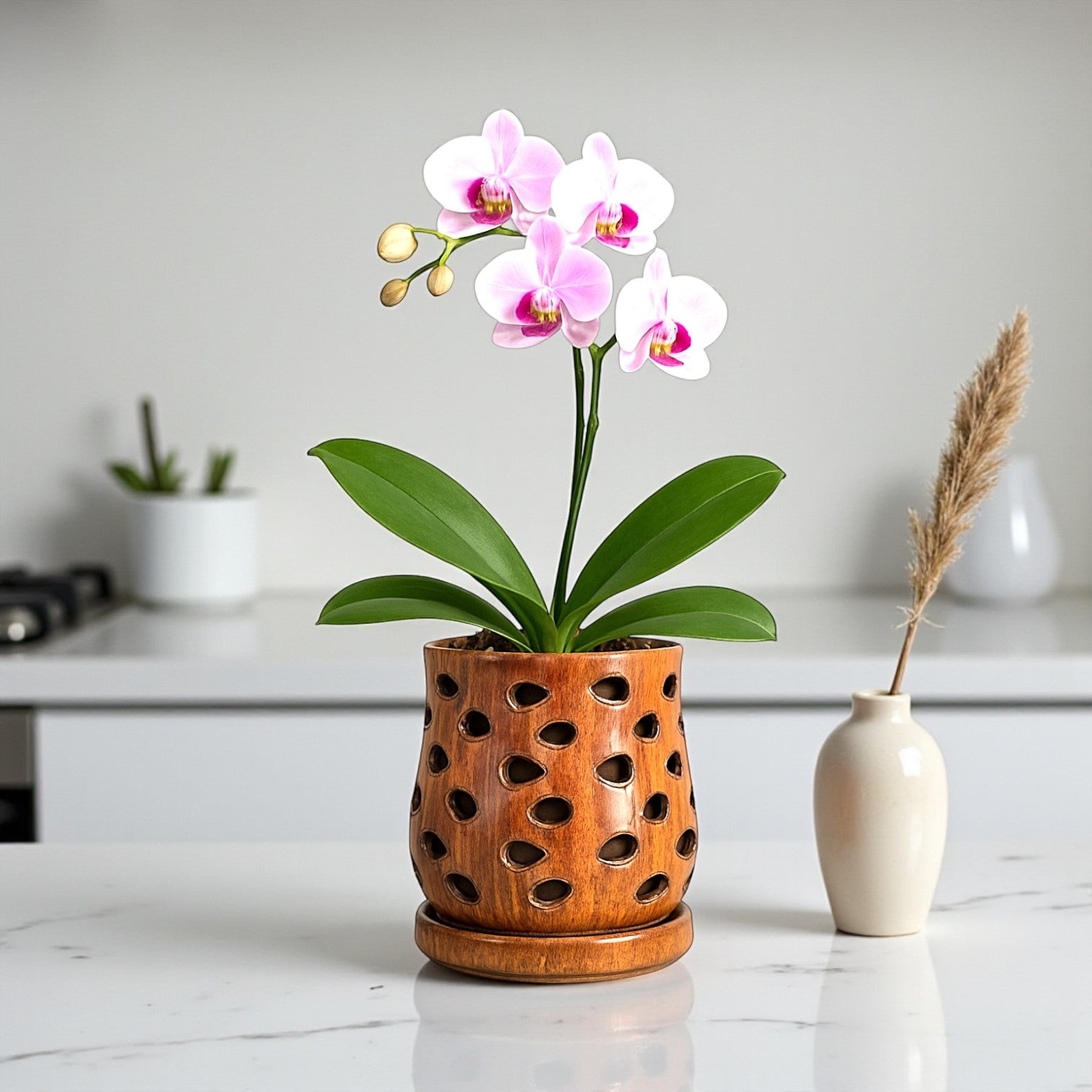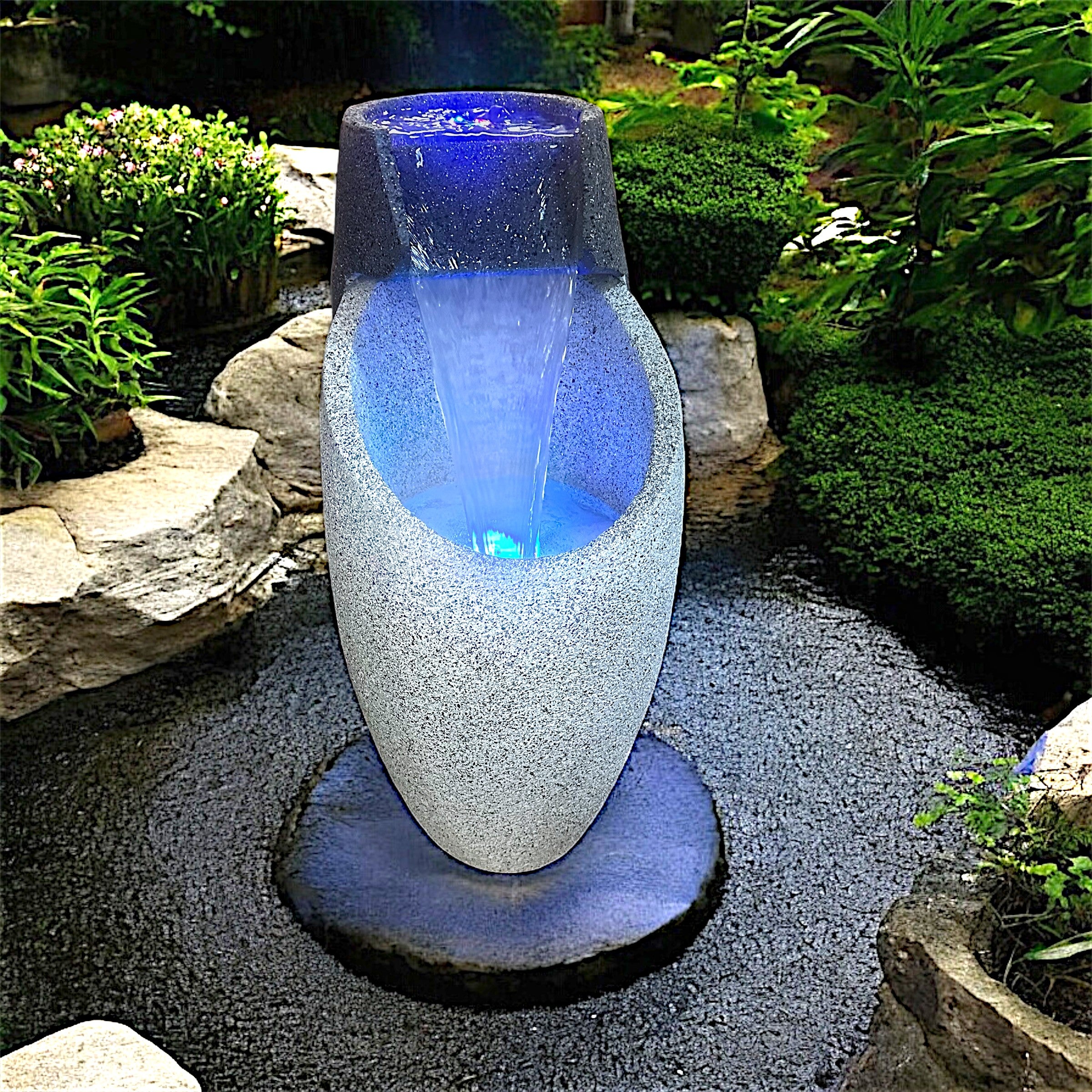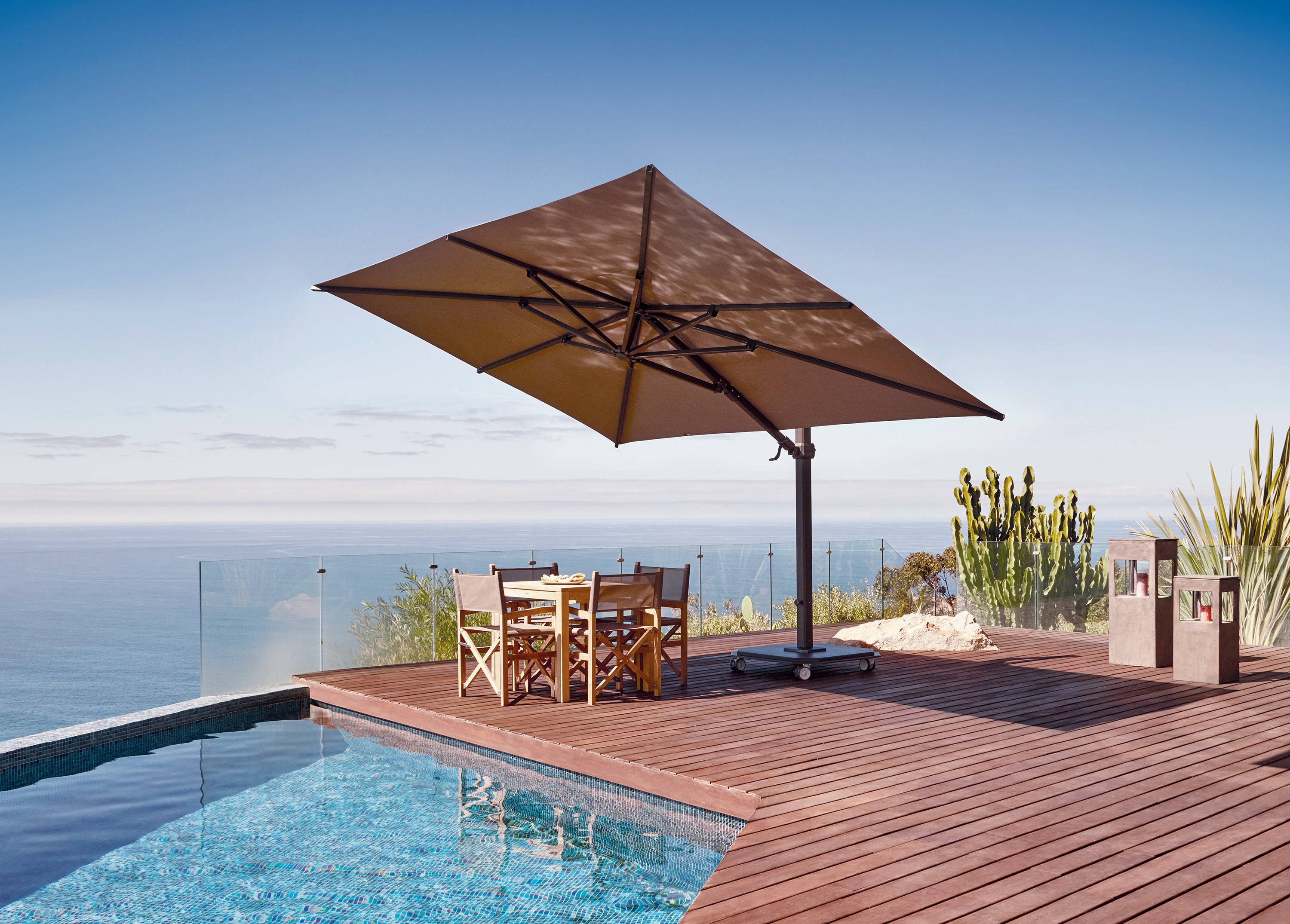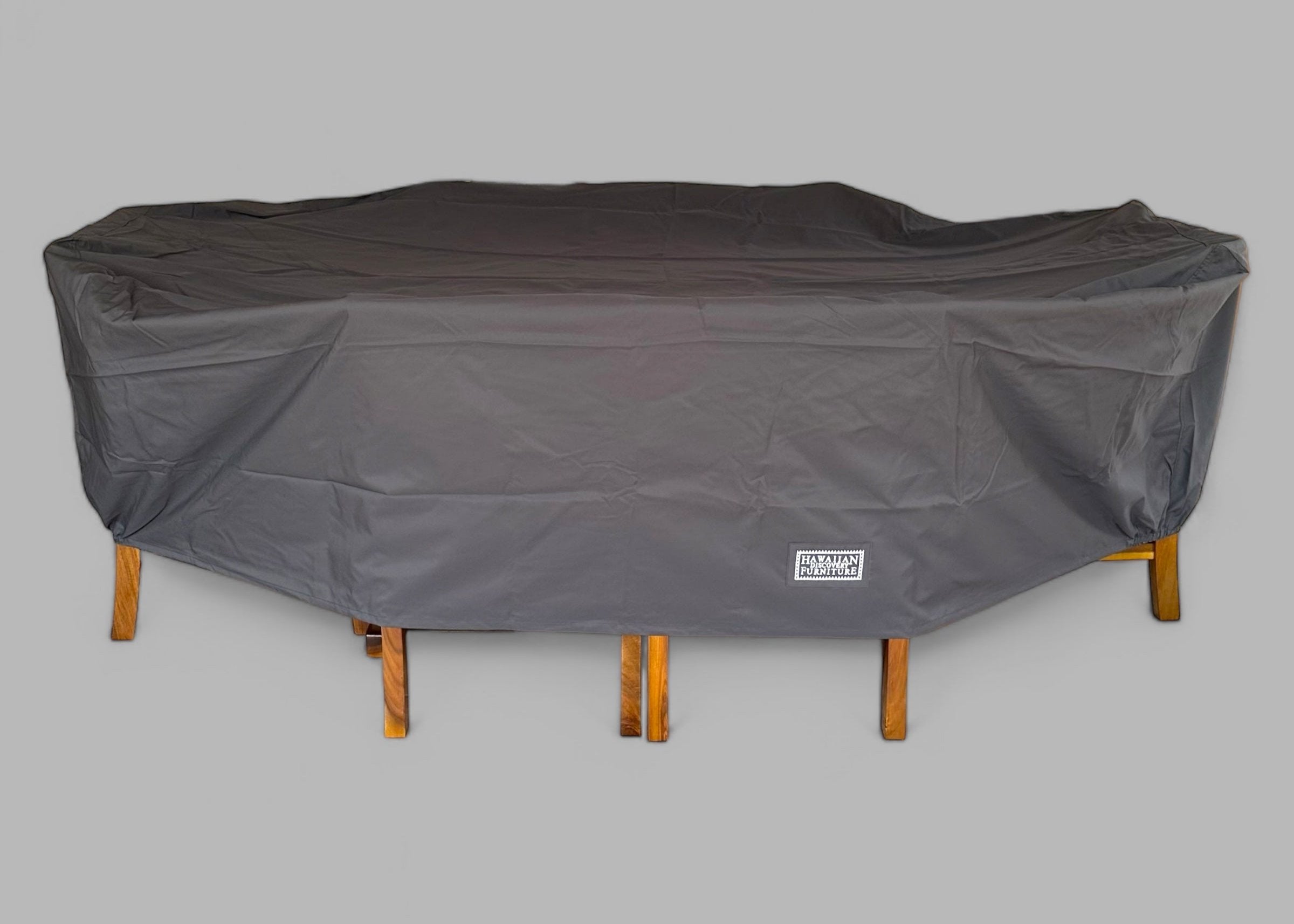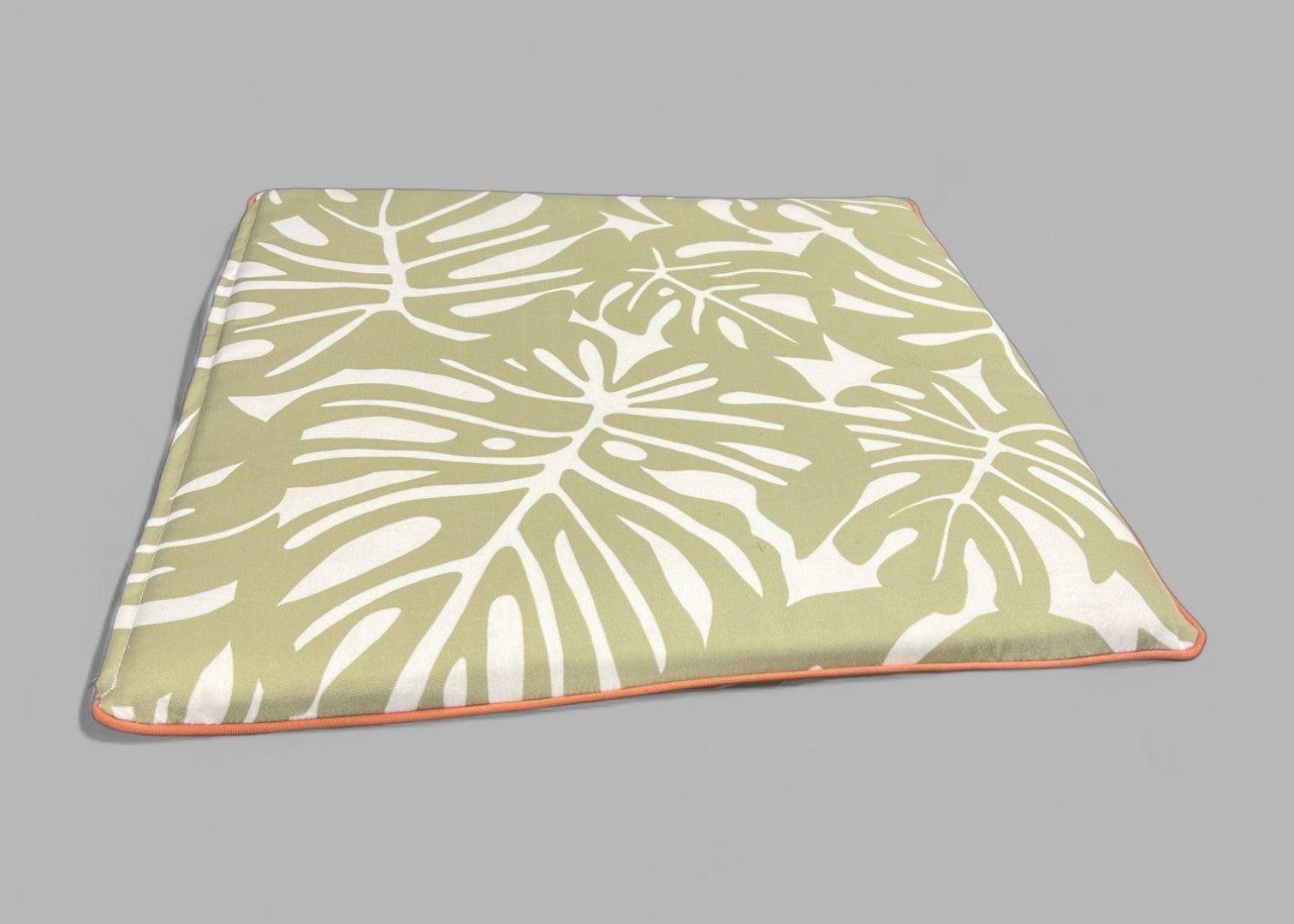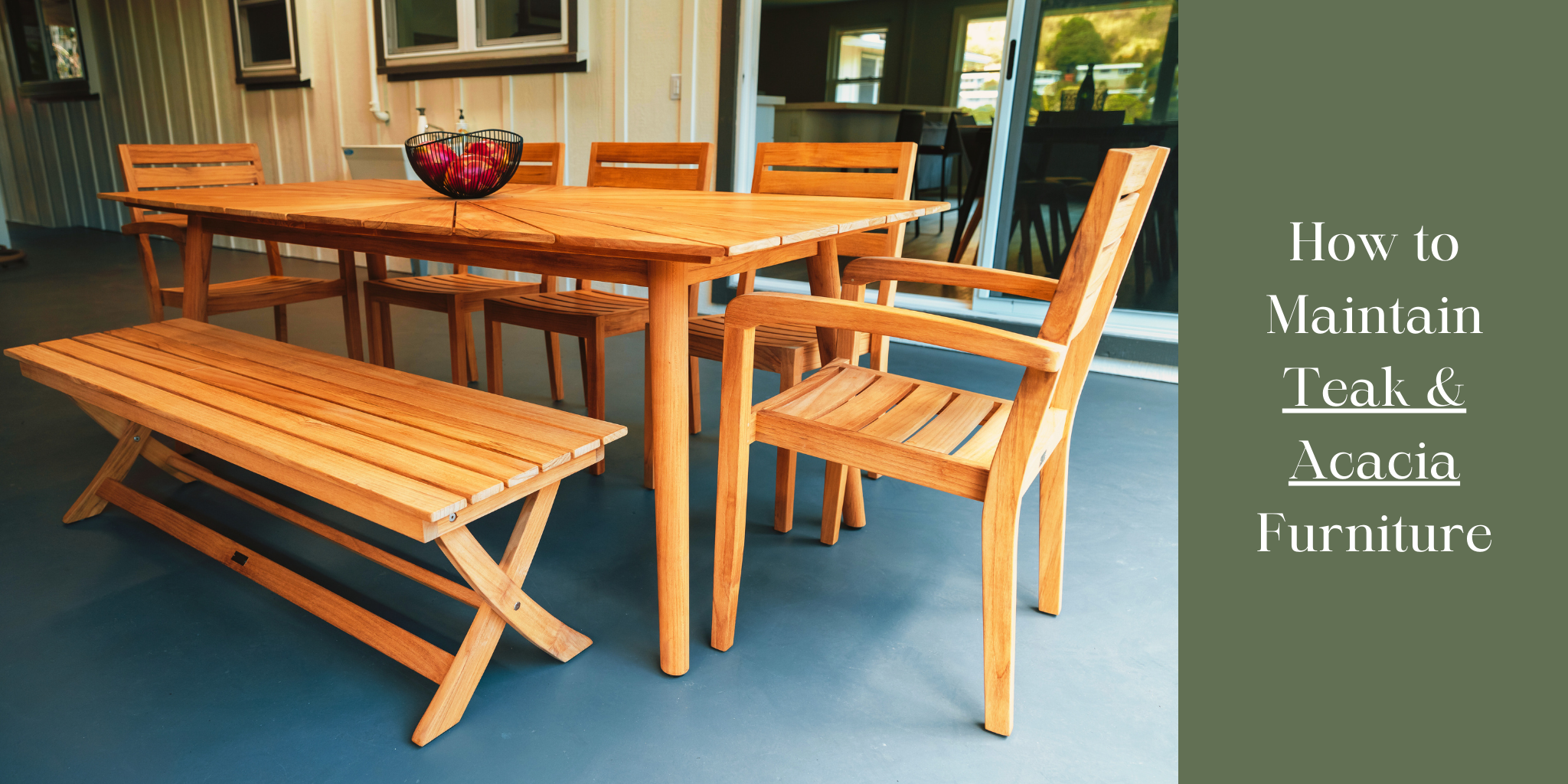Care & Maintenance
Teak Furniture
Teak Care Recommendations
a. What to Expect from Your New Teak Outdoor Furniture
When new, teak furniture boasts a rich golden hue, which naturally transforms into a soft silvery patina over time. This aging process typically takes six to
twenty-four months, depending on climate and seasonal exposure. Moist
environments speed up the weathering process, but rest assured—it all
evens out, creating a timeless, beautifully aged look.
Teak is naturally resistant to rot and deterioration, thanks to its high oil content. However, in the early stages, these natural oils can surface, sometimes leading to temporary darkening or black spots from mildew feeding on the oils. This is a
normal part of the aging process.
b. Important Care Tips
Before using your furniture, wipe it down with a damp cloth to remove any dust from manufacturing.
Expect some oil bleeding from the teak after the first few rainfalls. To protect your cushions, bring them indoors until the teak starts to gray. (Note: Cushion
stains from teak bleeding are not covered under warranty.)
Protect sling furniture by
moving sling chairs away from under teak tables during the first few rainfalls.
The same applies to fabric umbrella canopies used on teak umbrella frames. Once the aging process begins, oil bleeding will stop.
Checking (small cracks) in the
wood’s end grain is a natural result of surface expansion and contraction. This
is purely cosmetic and does not affect the structural integrity of your furniture.
Lifting wood grain, water spots, and mild discoloration may appear but will smooth out over time with weathering and regular cleaning.
c. What to Avoid
We do not recommend using teak oils or finishes, as they can interfere with the
wood’s natural weathering process. Applying these products will void the warranty.
For further teak care guidance, feel
free to contact us via email—we’re happy to help!
How To Clean
When and how should I clean my teak furniture?
a. Teak wood is naturally durable, but regular maintenance helps keep it looking its best. Outdoor furniture is exposed to pollen, insects, pollution, and other environmental factors, so periodic cleaning is essential.
b. For best results, clean your teak furniture at least twice a year to remove dirt buildup and preserve its beauty.
c. Step-by-Step Cleaning Guide
i. Hose down the furniture with fresh water to remove surface dirt. Avoid high-pressure hoses, as they can erode the wood’s surface.
ii. Scrub gently with a soft-bristle brush using the following cleaning solution:
1. ⅔ cup laundry detergent
2. ¼ cup bleach
3. 1 gallon of warm water
d. For Deeper Cleaning
If you’d like to restore your teak furniture to its original golden-brown color, we
recommend using a Starbrite Teak Cleaner. This safe and effective formula removes the silver-gray patina while deep-cleaning the wood.
With regular care, your teak furniture will maintain its natural beauty and long-lasting durability for years to come!
Black Spot Solution
What are the black spots on my furniture? How do I remove these black
spots?
a. Noticing black spots on your teak furniture? Don't worry—these are mildew spots, caused by humidity and natural mold spores in the air. They’re a normal part of teak’s weathering process and not a defect.
b. High-quality teak is naturally resistant to mold and mildew thanks to its dense grain and rich natural oils. However, mildew can still develop when dirt, leaves, or debris accumulate on the surface. If left unchecked, these contaminants can eventually penetrate the wood, especially in damp or humid conditions where the furniture doesn't dry out completely.
c. How to Remove Mildew Spots
If mildew appears, follow these simple steps to clean your furniture:
i. Mix a mild cleaning solution: 1 part bleach to 10 parts water.
ii. Apply the solution to the affected areas and let it sit for a minute.
iii. Gently scrub in the direction of the grain using a soft-bristle brush.
iv. Rinse thoroughly with clean water.
v. Repeat if needed until the spots disappear.
d. Prevention & Long-Term Care
Keeping your teak furniture clean will help prevent mildew from forming. Here’s how to maintain it:
i. Hose off dirt and debris regularly to stop mold from settling.
ii. Wipe it down occasionally with mild soap and water.
iii. Never use a pressure washer—it can damage the wood’s surface.
e. A little routine care goes a long way in keeping your teak furniture beautiful,
durable, and mildew-free!
Sling and Woven Strap Care
Want to keep your sling and woven strap furniture looking its best?
a. Brush off loose dirt.
b. Hose it down with clean water.
c. Mix a gentle cleaning solution using water and mild, natural soap (avoid detergents).
d. Scrub gently with a soft-bristle brush.
e. Let the soap soak in for a few minutes.
f. Rinse thoroughly.
g. Air dry completely.
h. For Stubborn Stains
If mildew, roof runoff, or other tough stains persist, try a spot treatment
with a diluted chlorine bleach mixture:
i. Mix ½ cup chlorine bleach, ¼ cup natural soap (no detergents), and 1 gallon of water.
ii. Apply with a soft-bristle brush and let it soak for up to 20 minutes.
iii. Rinse thoroughly and air dry.
iv. Repeat if necessary.
i. Prevention & Long-Term Care
To extend the life of your sling and woven fabrics and minimize deep cleaning:
i. Rinse monthly with clean water to prevent dirt buildup.
ii. In most environments, deep cleaning is only needed every 2–3 years.
iii. You can clean the fabric while it’s still on the frame or remove it for easier
handling.
iv. Protect new sling chairs by keeping them away from teak tables during the first
few rainfalls.
j. With a little routine care, your sling and woven strap furniture will stay fresh,
stylish, and ready for relaxation!
Fabric Care
How do I care for Sunbrella® or Olefin fabrics?
a. Sunbrella® and Olefin fabrics are designed for easy maintenance and long-lasting beauty, but regular care helps keep them looking their best. Here’s how to clean and protect your fabric:
b. Everyday Cleaning
i. Blot (don’t rub) spills with a clean, dry cloth.
ii. For oil-based spills, sprinkle an absorbent like cornstarch, then remove with a straight edge.
iii. Prepare a mild cleaning solution using water and natural soap (no detergents).
iv. Spray the fabric and let the solution soak in.
v. Rinse thoroughly to remove all soap residue.
vi. Air dry completely.
vii. For stubborn stains, follow the specialized cleaning instructions below.
c. Cleaning Removable Fabric
Hand Washing
i. Use a mild soap solution and gently scrub the fabric.
ii. Rinse thoroughly and let it air dry.
Machine Washing
iii. Contact us before removing cushion casings, as construction may vary.
d. Cleaning Non-Removable Fabric
i. Prepare a solution: Mix ¼ cup mild soap per gallon of lukewarm water.
ii. Gently scrub with a soft-bristle brush, allowing the solution to soak in.
iii. Rinse thoroughly to remove all soap residue.
iv. Air dry completely.
e. Seam-to-Seam Cleaning Tip:
When cleaning upholstery, always clean the entire surface from seam to seam rather than scrubbing in a circular motion. This prevents water rings and ensures an even clean.
f. Removing Mold & Mildew
Sunbrella® and Olefin fabrics don’t promote mildew growth, but dirt and debris can create conditions where mildew may form. If mildew appears:
i. Prepare a cleaning solution: Mix 1 cup bleach and ¼ cup mild soap per gallon of water.
ii. Spray the entire area and let it soak for 15 minutes.
iii. Gently scrub with a sponge, soft brush, or clean towel.
iv. Rinse thoroughly to remove all residue.
v. Allow fabric to air dry.
g. Disinfecting Sunbrella® and Olefin Fabrics
Sunbrella® and Olefin is built to withstand strong cleaning agents like bleach without losing color or durability. Its proprietary fiber technology ensures resistance to chemicals, UV light, and repeated deep cleaning—without affecting its warranty.
For thorough sanitization, you can safely disinfect Sunbrella® and Olefin fabrics with bleach and other cleaning agents, ensuring long-term performance and freshness.
With proper care, your Sunbrella® or Olefin fabric will stay vibrant, durable, and ready for any environment!
Other Protection
Is there any way to protect my table from food stains?
a. To keep your teak furniture looking its best and protected from stains like coffee, red wine, and salad dressing, we recommend using a Teak Protector that's available at one of our stores.
b. This transparent and safe solution works on clean, naturally weathered wood, forming a protective barrier that helps prevent stains from penetrating the surface.
c. For the best results:
i. Wipe spills immediately with a damp cloth.
ii. Apply the Teak Protector at least twice a year, or more often depending on usage and exposure.
d. With proper care, your teak furniture will maintain its natural beauty and durability for years to come!
Acacia Furniture
What should I expect from my new Acacia outdoor furniture?
Acacia wood or monkey pod wood is commonly used for indoor and outdoor furniture such as kitchenware, tables, flooring, etc. Some species are also utilized for paper products. Acacia is famous for its durability and lastingness. A piece of well-cured acacia furniture will have beautiful brown coffee tones that give elegance and antiqueness to any household.
Acacia is often used to make different pieces of furniture due to its aesthetic and ability to last for a longer time, especially when given proper care. Additionally, how to care for acacia wood outdoor furniture can be easy, and various ways are guaranteed to help you maximize your acacia furniture.
Homeowners appreciate Acacia wood for its durability to last for decades and the density, scratch resistance, and surface hardness properties long after being processed and shaped. It’s also a sustainable product with over 1,300 different varieties making it universally accessible and eco-friendly. The complexity in grain patterns is second to none and can even give a lighter, natural material look than teak. However, Acacia wood does require a bit of maintenance, but with proper treatment, your furniture will keep its rich color throughout the seasons.
How do I care for my Acacia furniture?
Practice proper cleaning.
How to care for acacia wood outdoor furniture starts with proper cleaning. Wipe down your furniture often with a damp rag to eliminate dust and prevent dust accumulation. The routine attention to this breathing, living material will help preserve its integrity and eventually avoid drying or cracking.
Use a gentle soap to clean.
Use products without silicone or ammonia products. These products contain properties that can create dryness in the wood that can eventually lead to cracking. A mild soap, warm water solution will keep your Acacia wood happy.
Always wash and wipe down wet spots.
If your furniture is located next to the pool resulting in occasional chlorine-rich splashes, gently wash your furniture then wipe dry with a clean cloth. Also, set your furniture with enough distance from heat and avoid direct sunlight.
Use a preservative product.
You can commonly find boiled linseed oil or tung oil in commercial goods as the base ingredient for oiling outdoor wood furniture for its natural drying properties. Acacia wood’s sensitivity to direct sunlight means that pigmented finishing oil is preferred over transparent, which will provide UV protection.
Other Care Instructions for Acacia Furniture?
- Non-detergent liquid soap is perfect when it comes to cleaning products for outdoor furniture. They do not include harmful chemicals that might cause your furniture to deteriorate easily. A mixture of water and white vinegar can help you remove tough stains, mold, and mildew.
- How to care for acacia wood outdoor furniture always begin with cleaning the exteriors using a soft brush or cloth. Then evaluate if further care and cleaning are necessary.
- Clean off your furniture as soon as possible when contaminated by bird droppings and Sunscreens. They can cause permanent damage and stains, which are too hard to get rid of. Corrosion is also another factor to consider and avoid.
- Try to cover your furniture when not in use for extended periods. Doing so can preserve your furniture longer and make maintenance easier, especially during the summer season. Breathable covers are the best choice since they prevent mold growth.
- Read the manual. Newly acquired acacia furniture will have cleaning and maintenance instructions. Following the directions properly is the key for your acacia furniture to stay in shape.
Get in touch
Have questions about your order, or a general enquiry?

